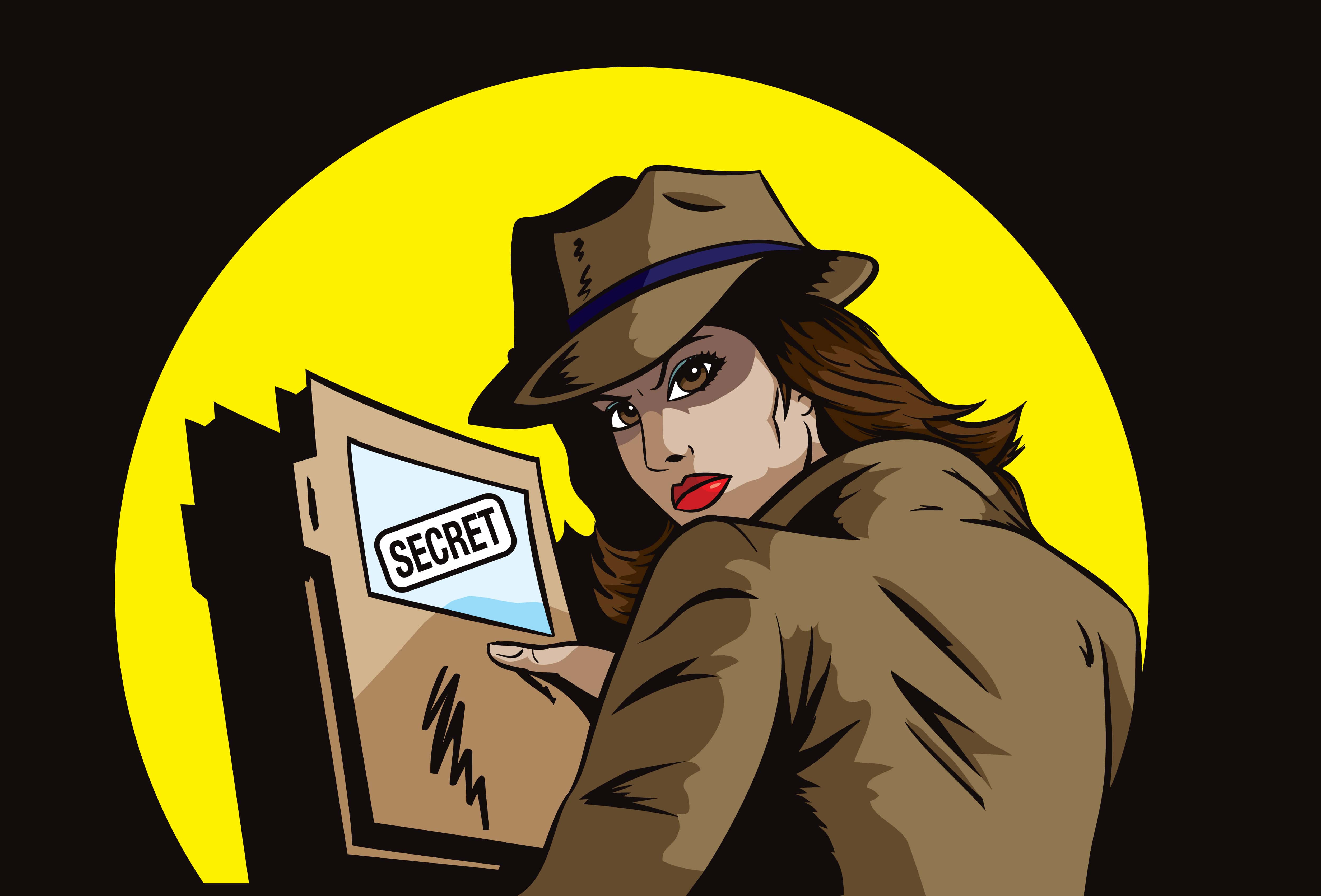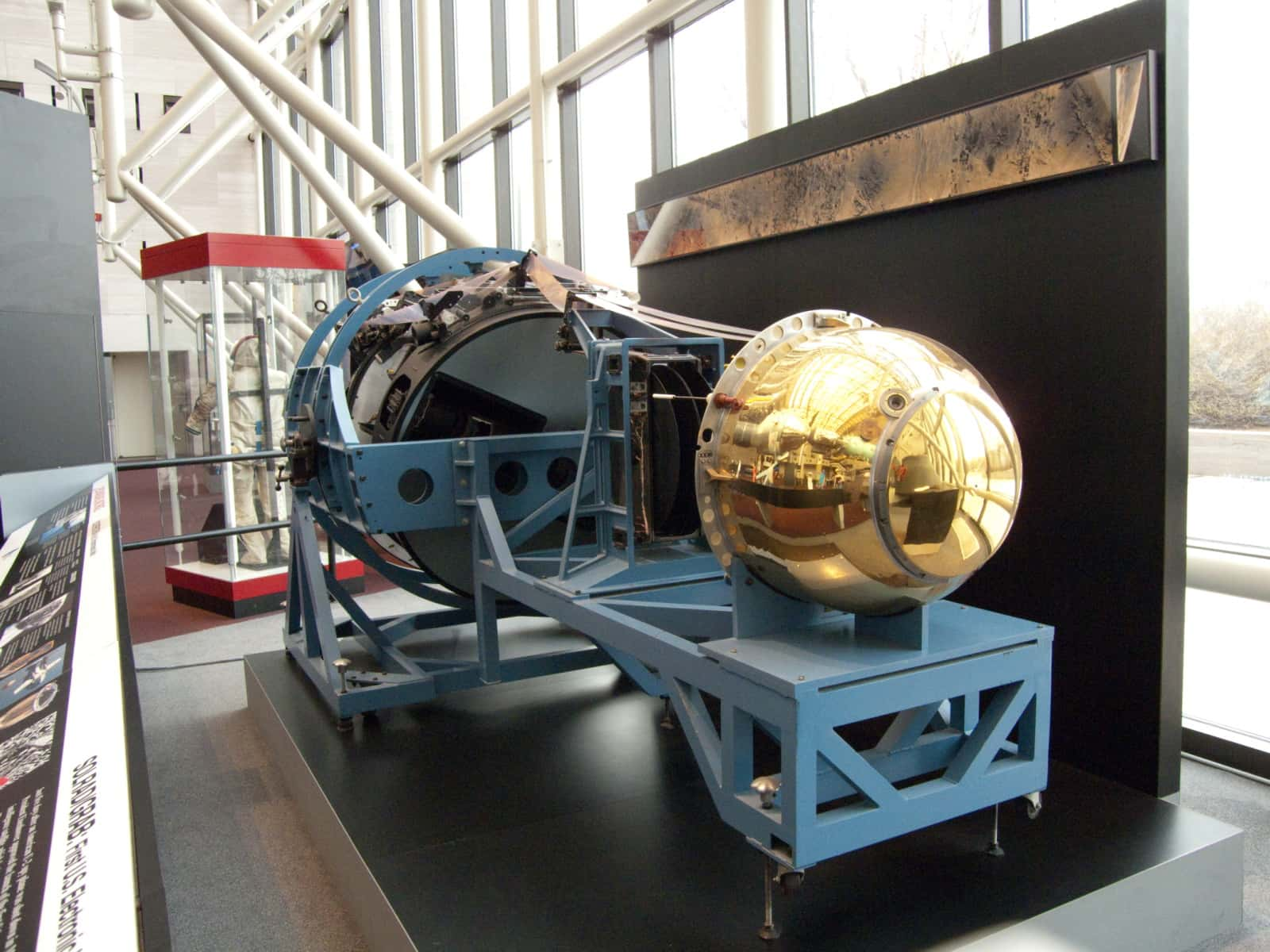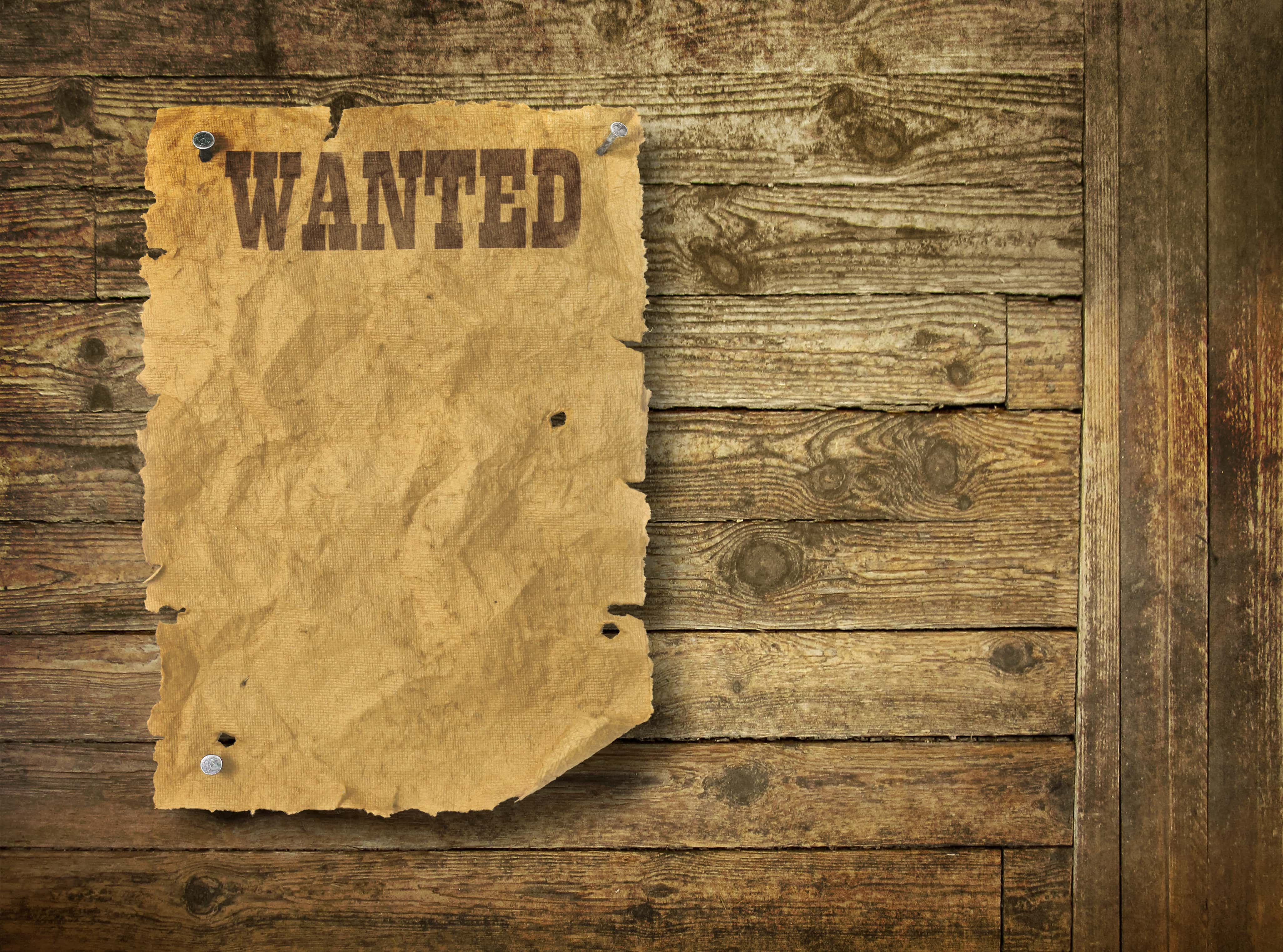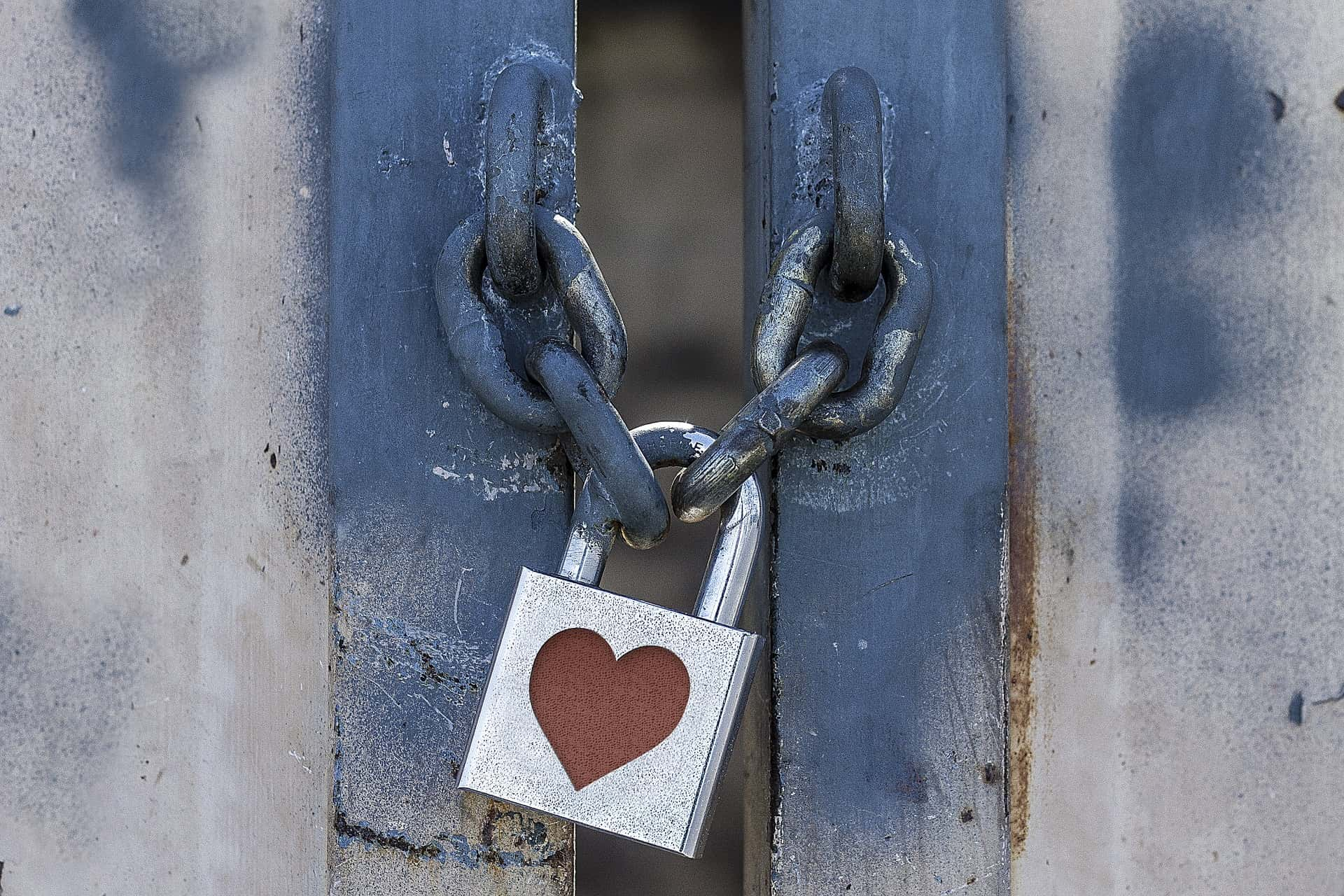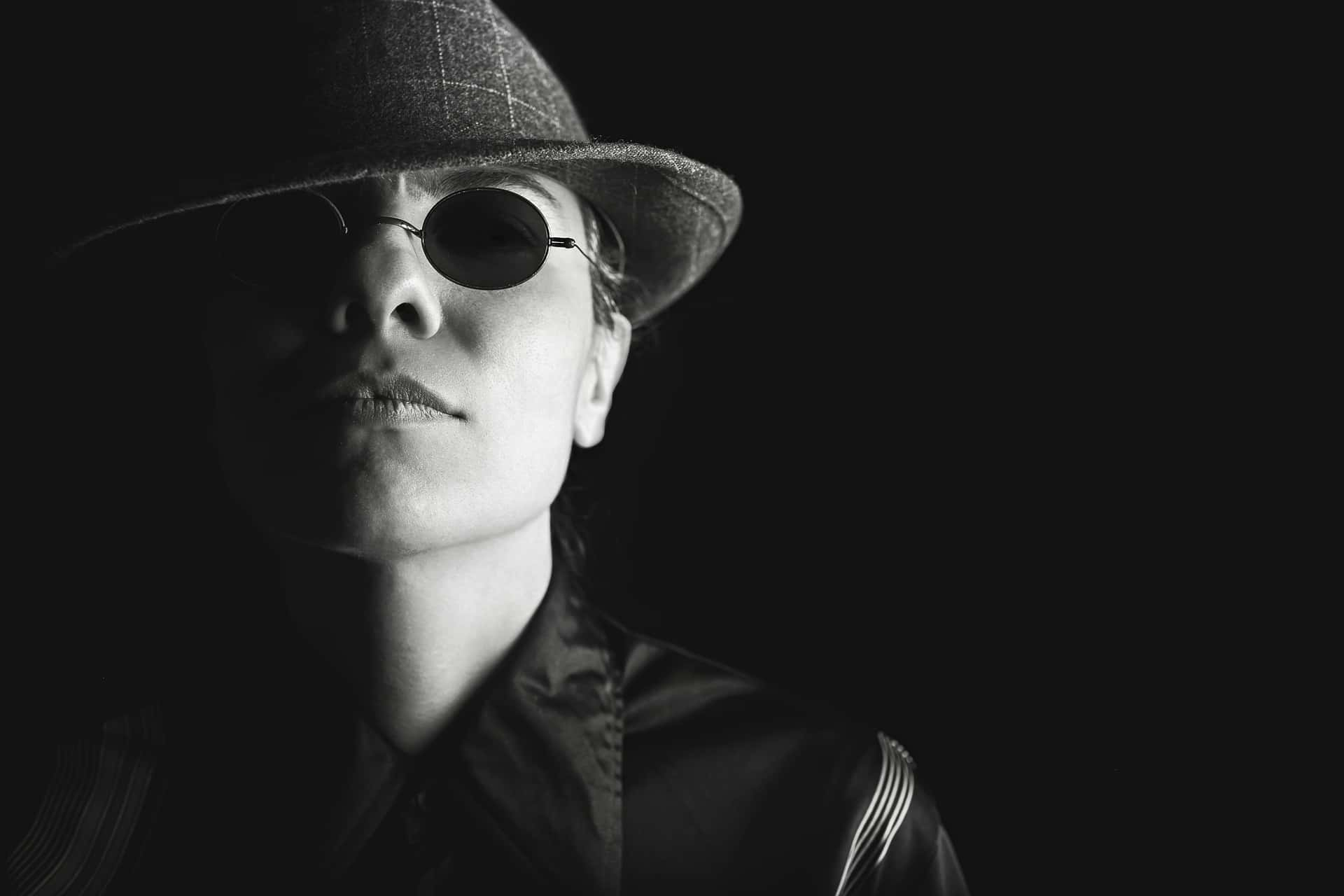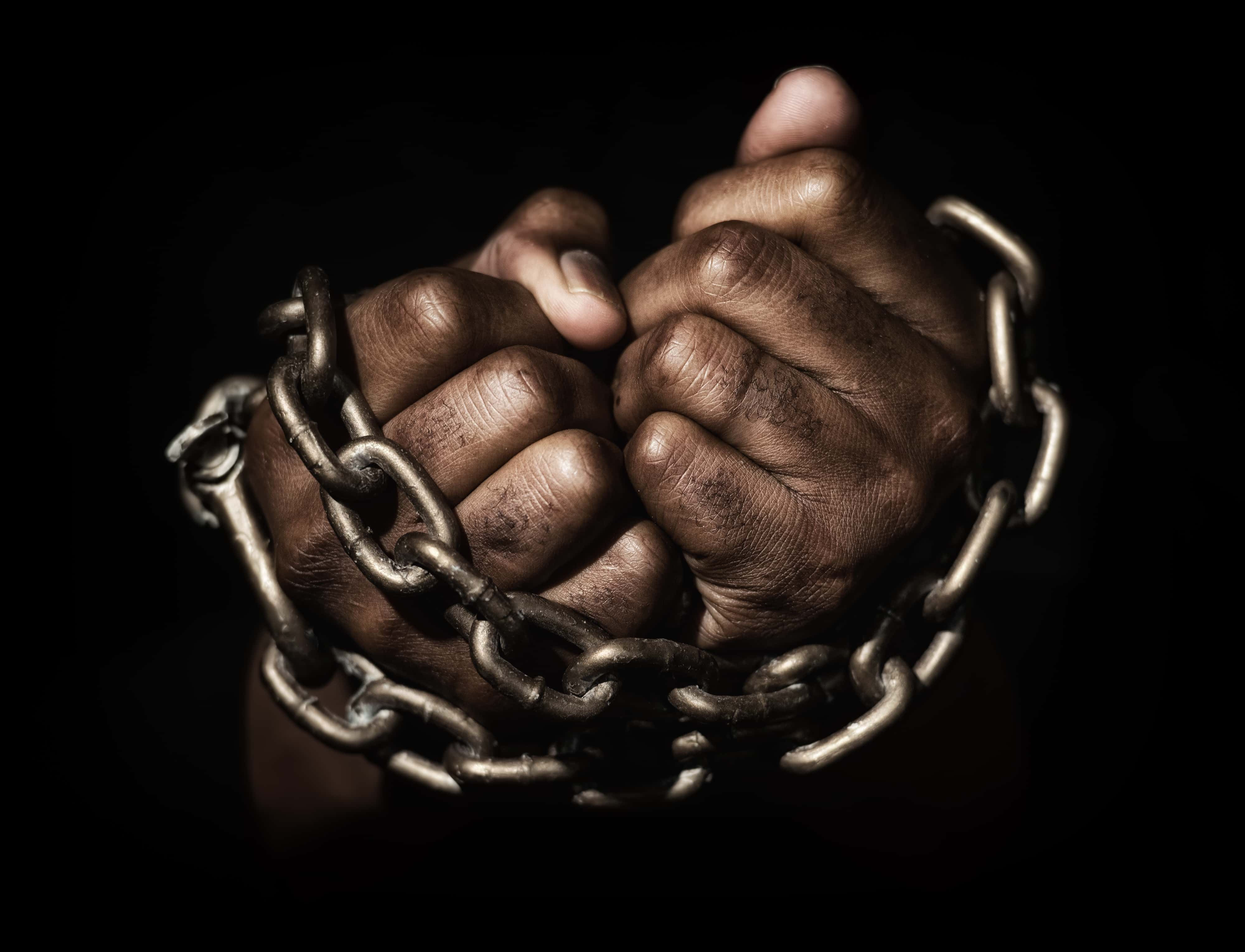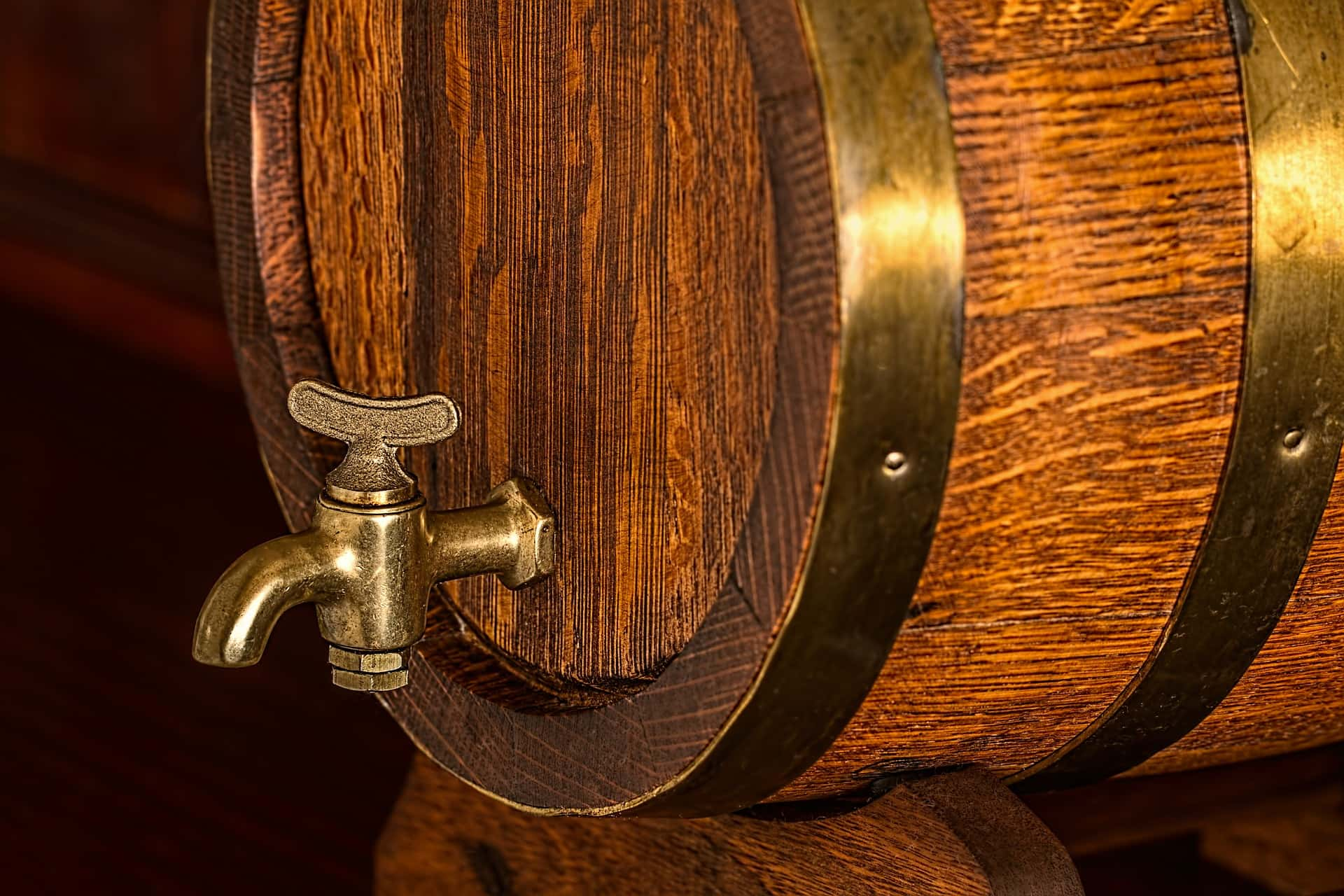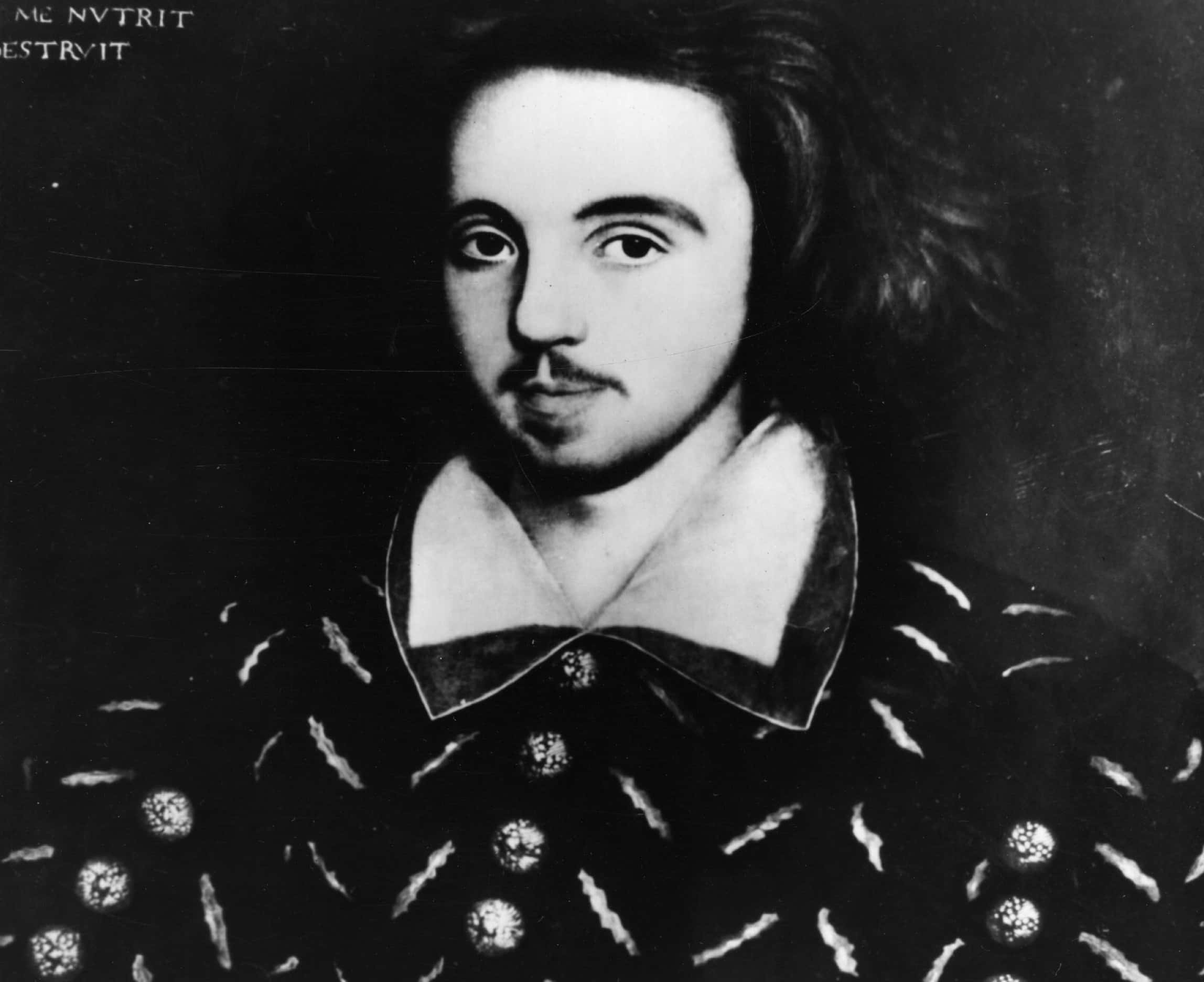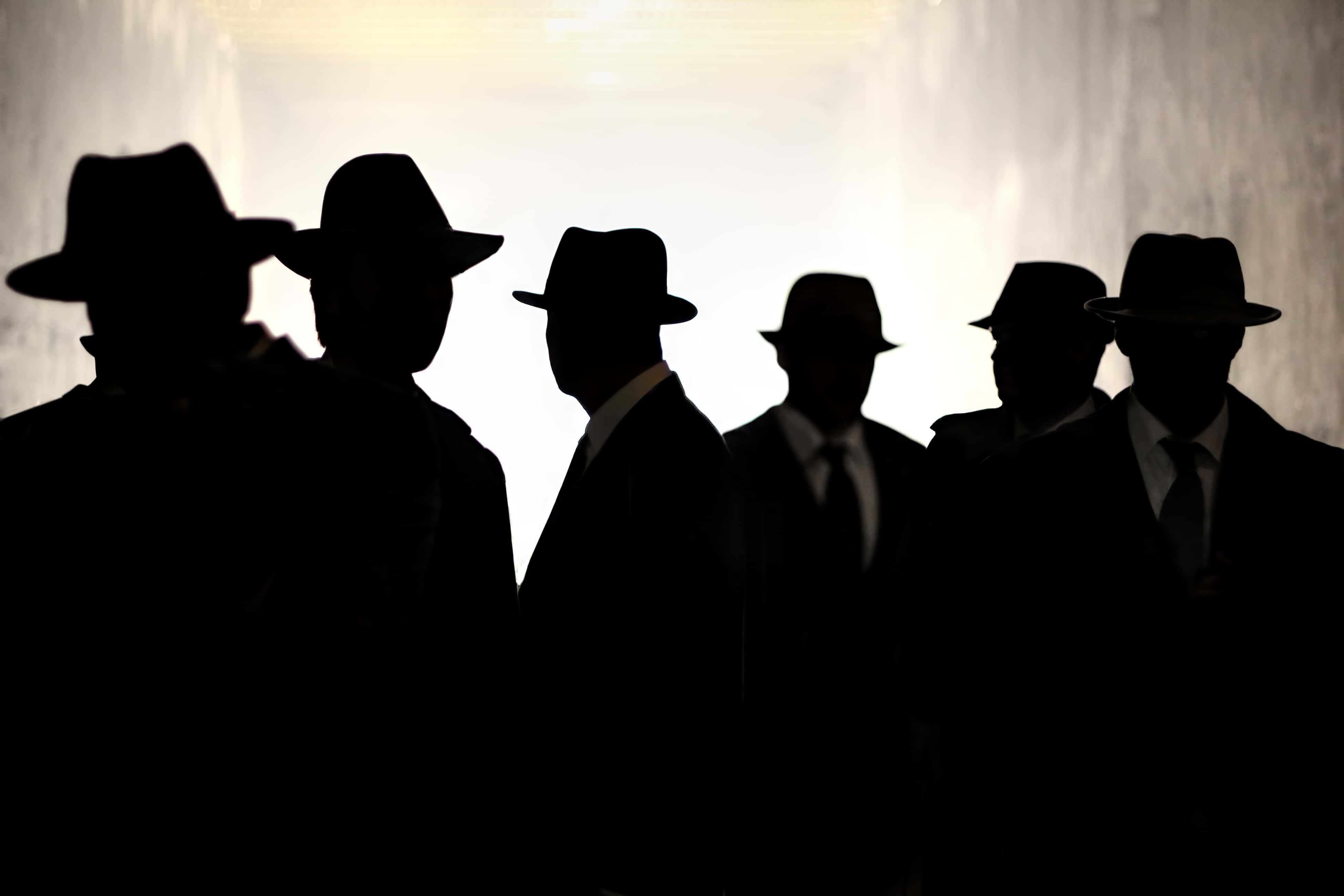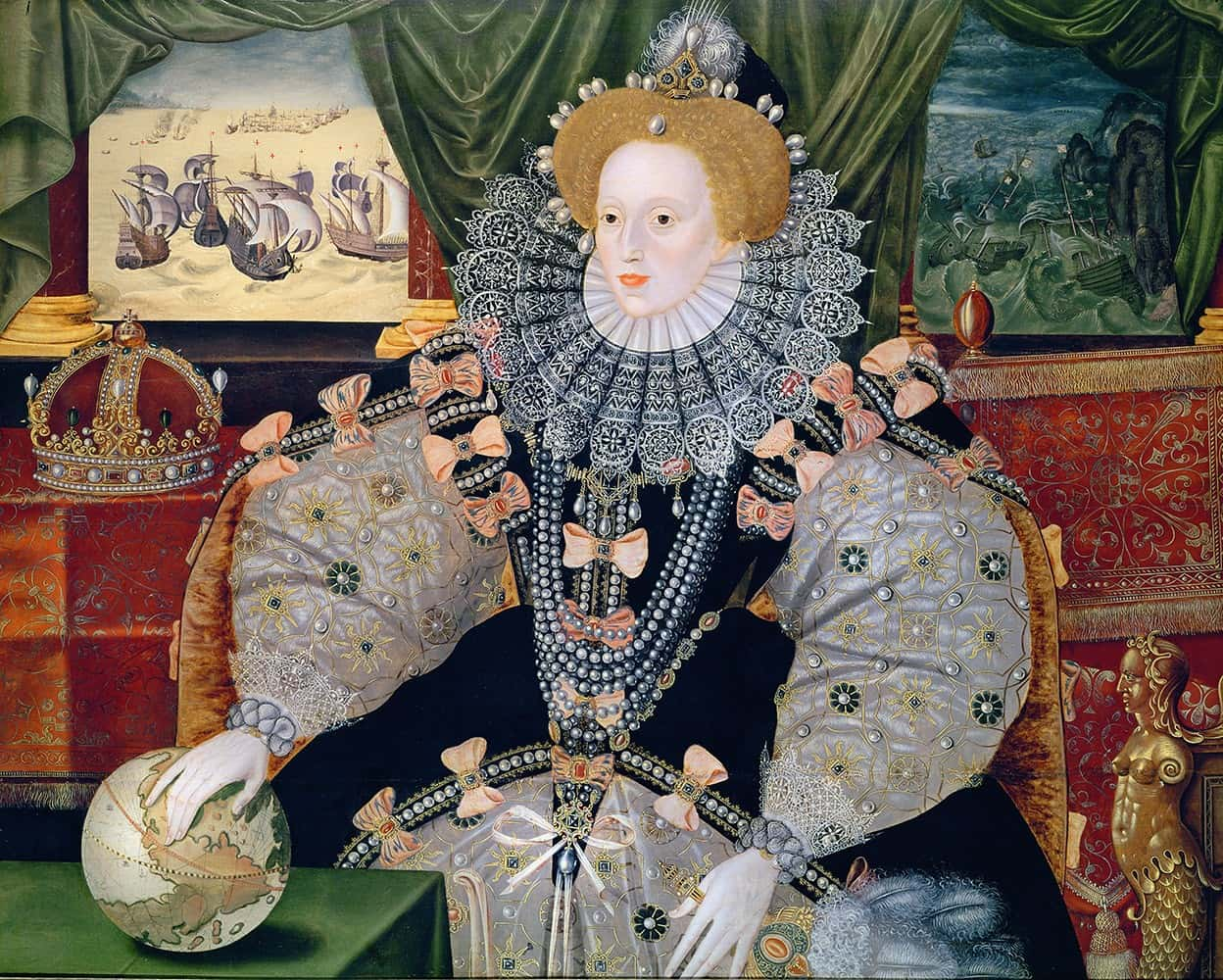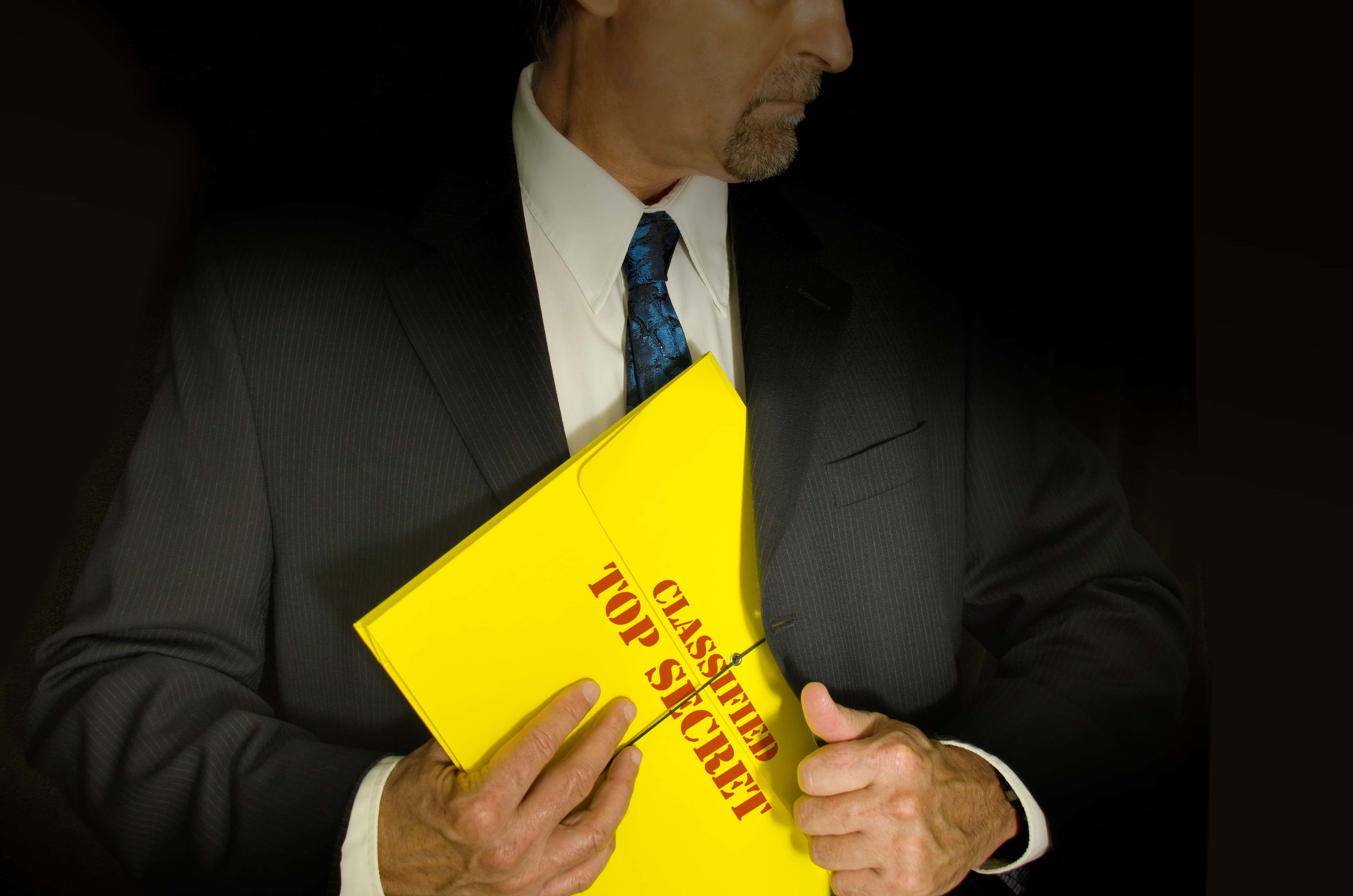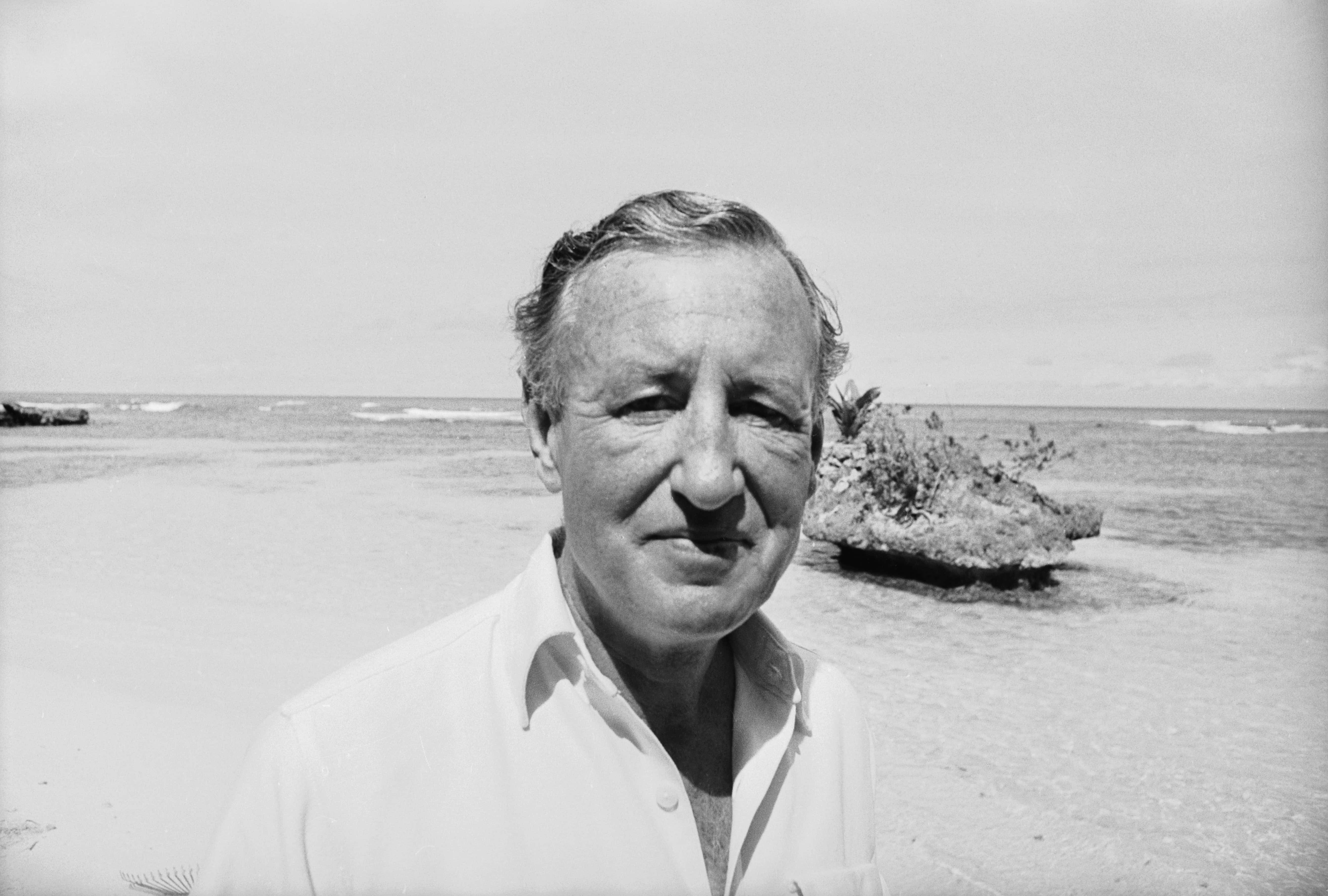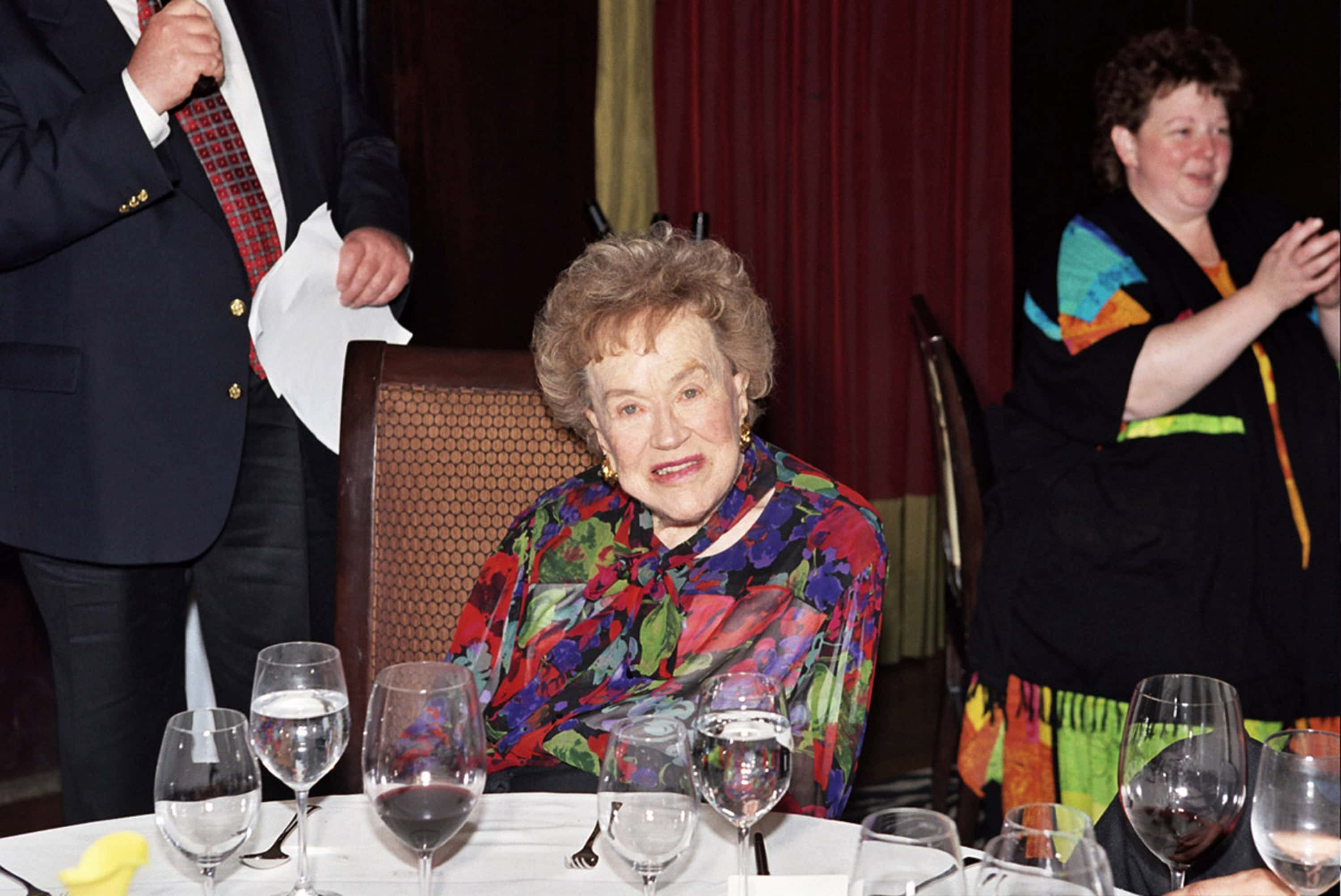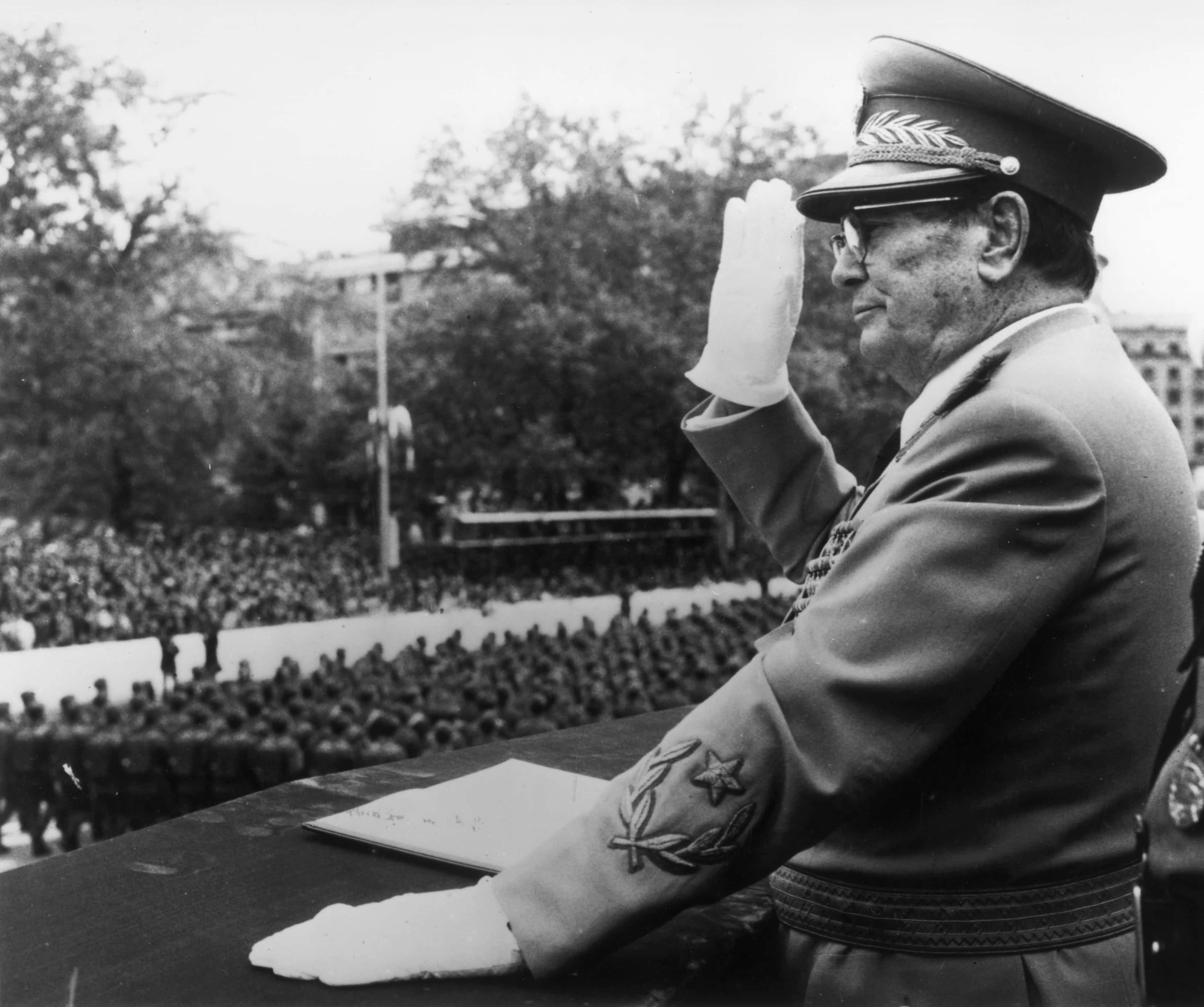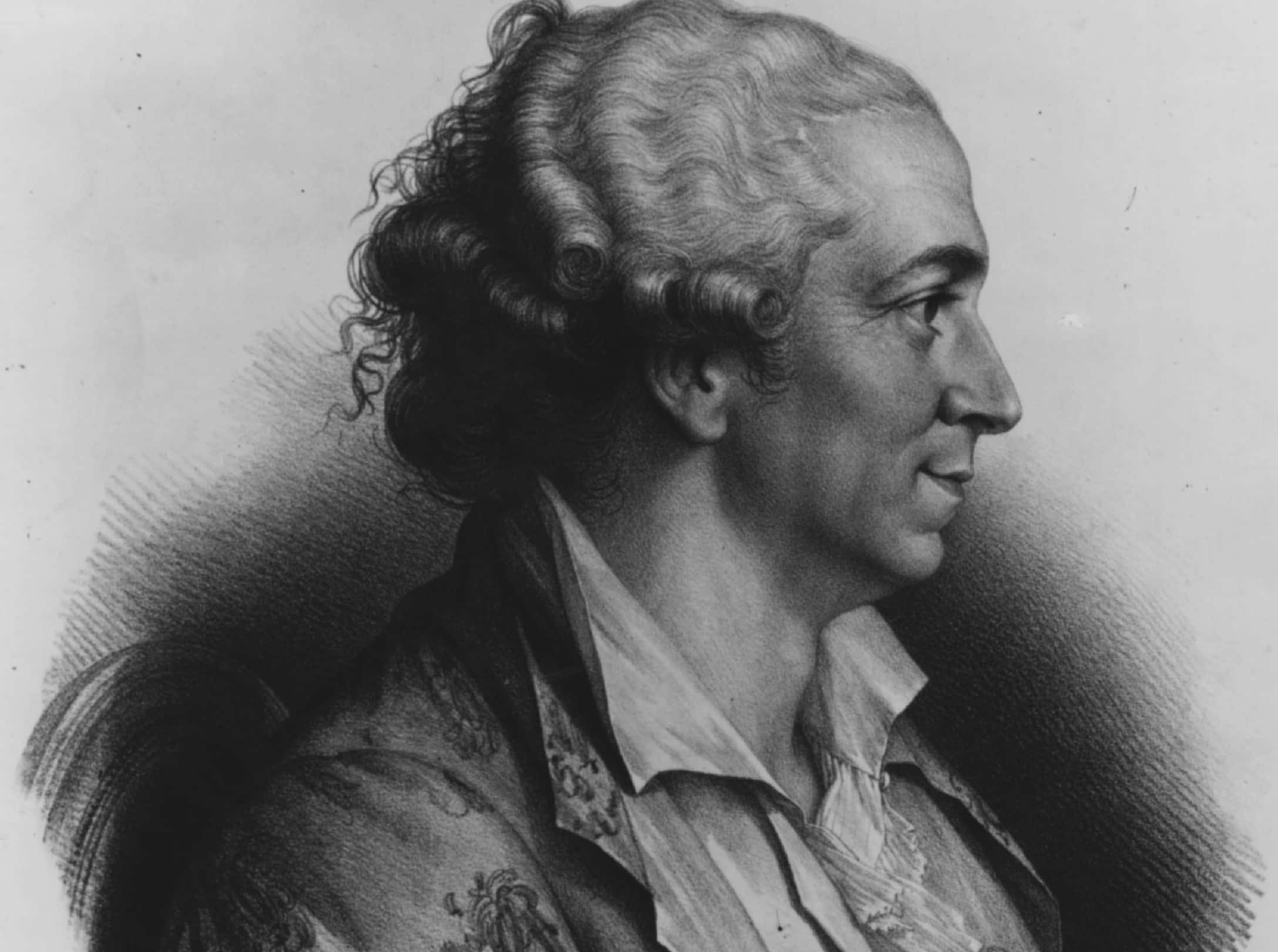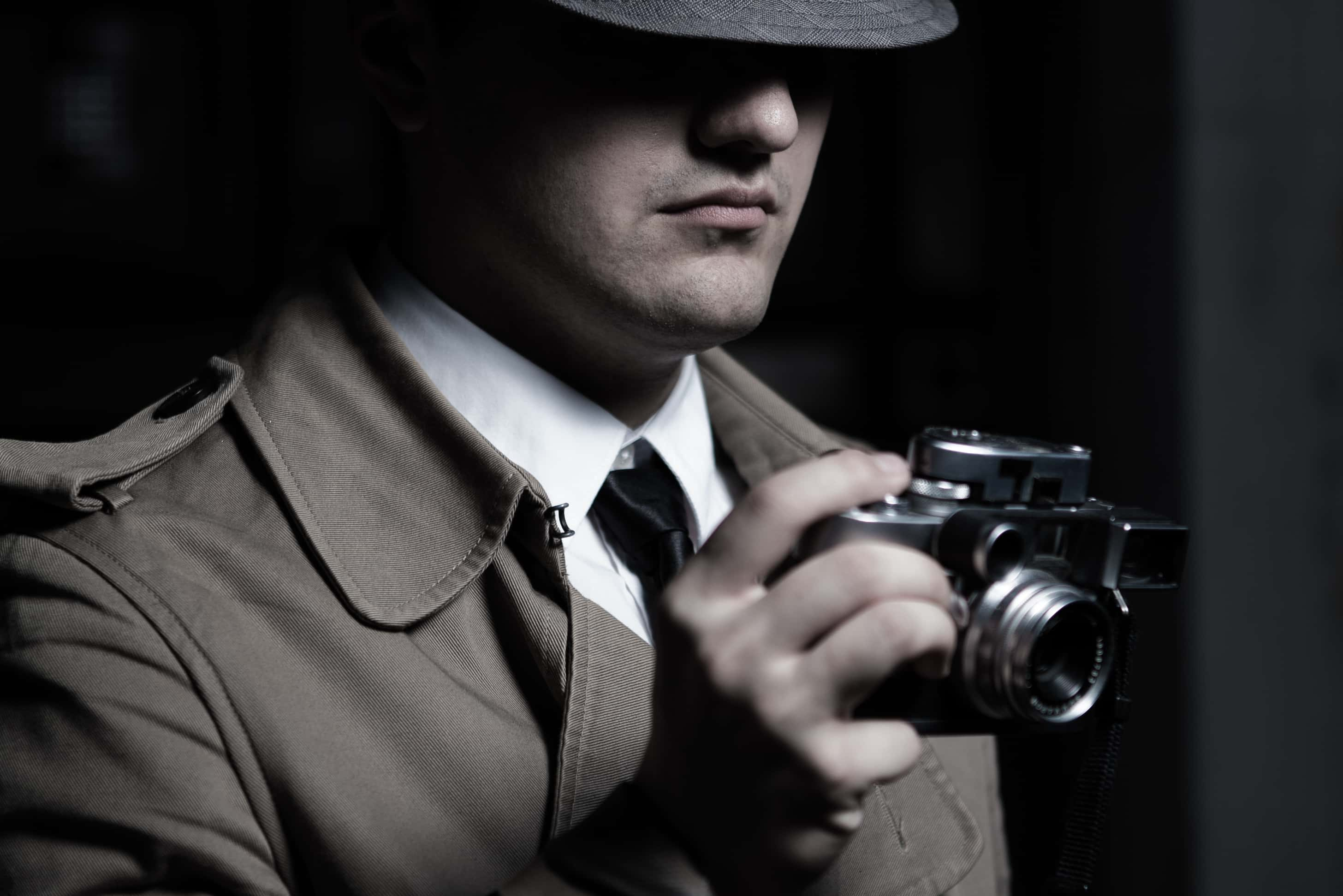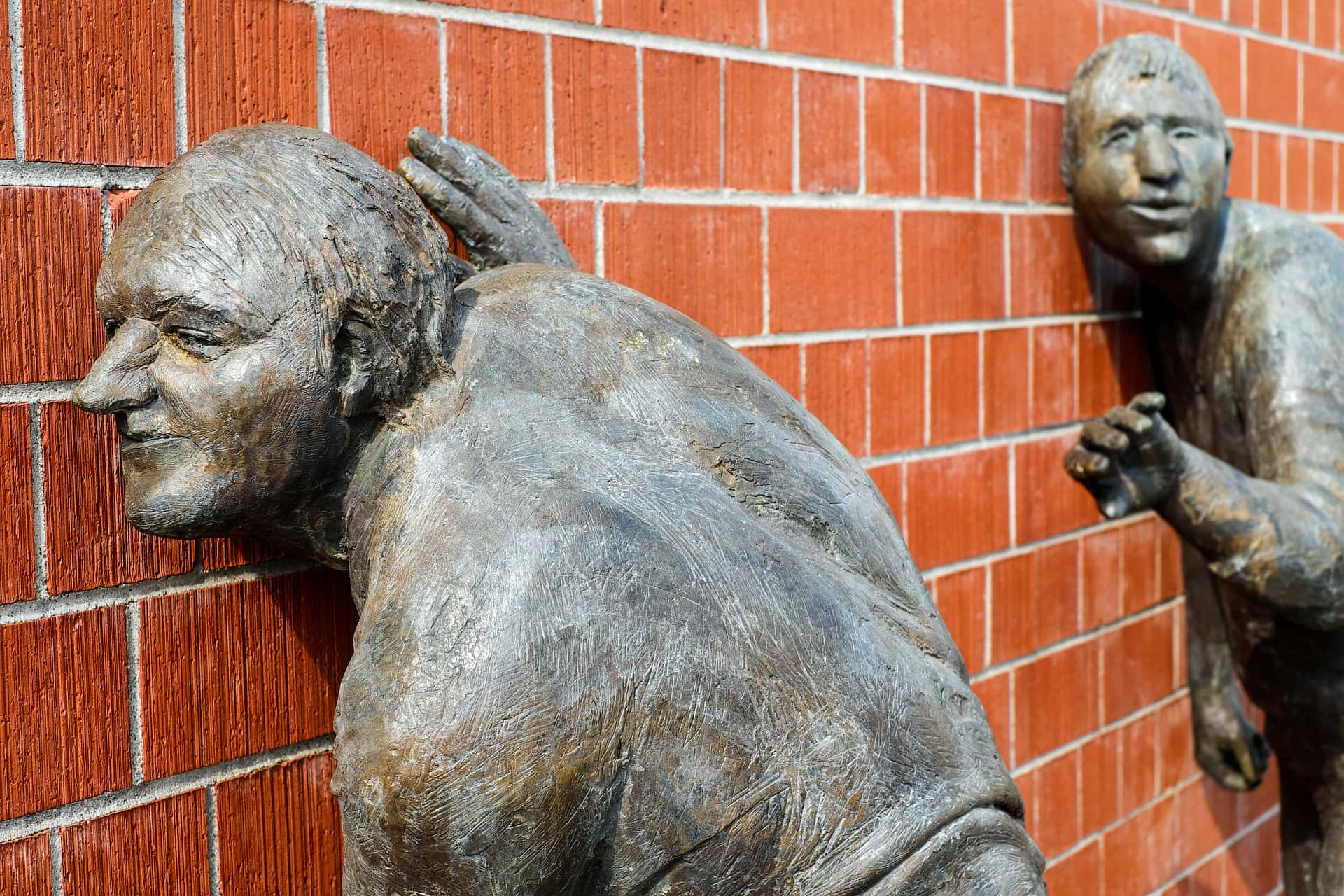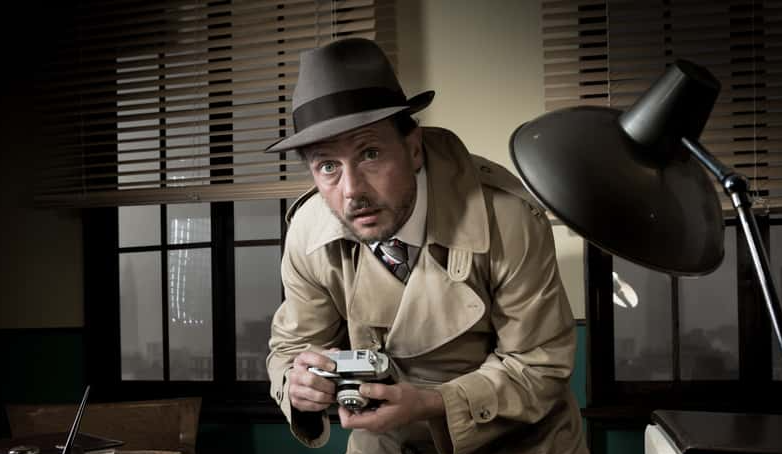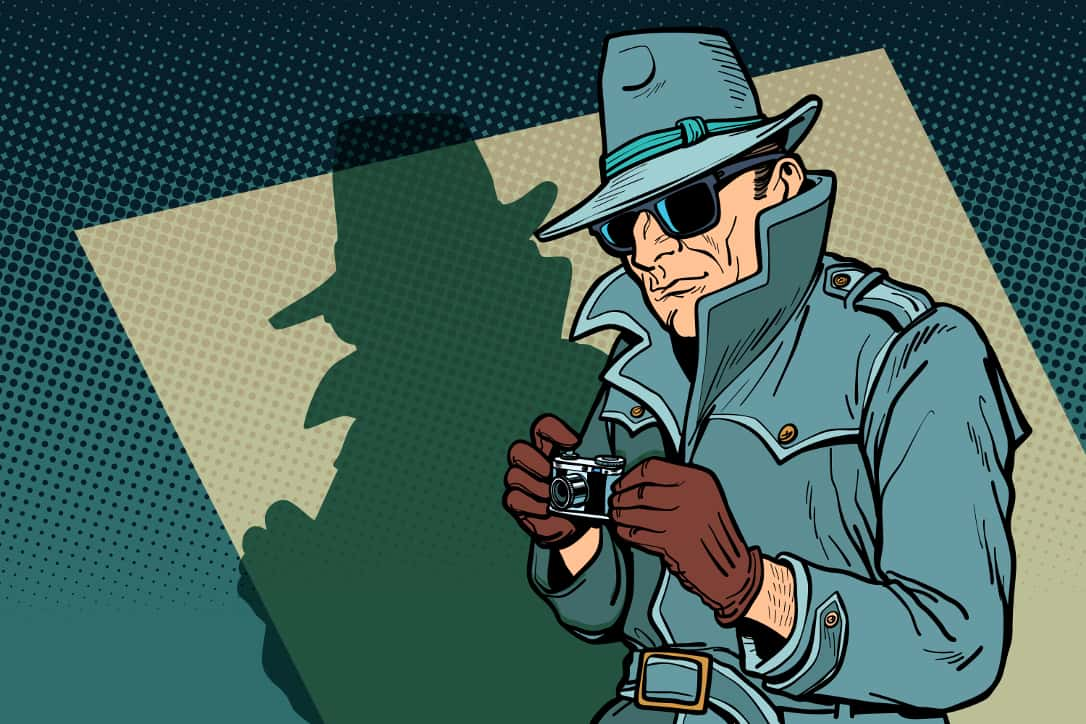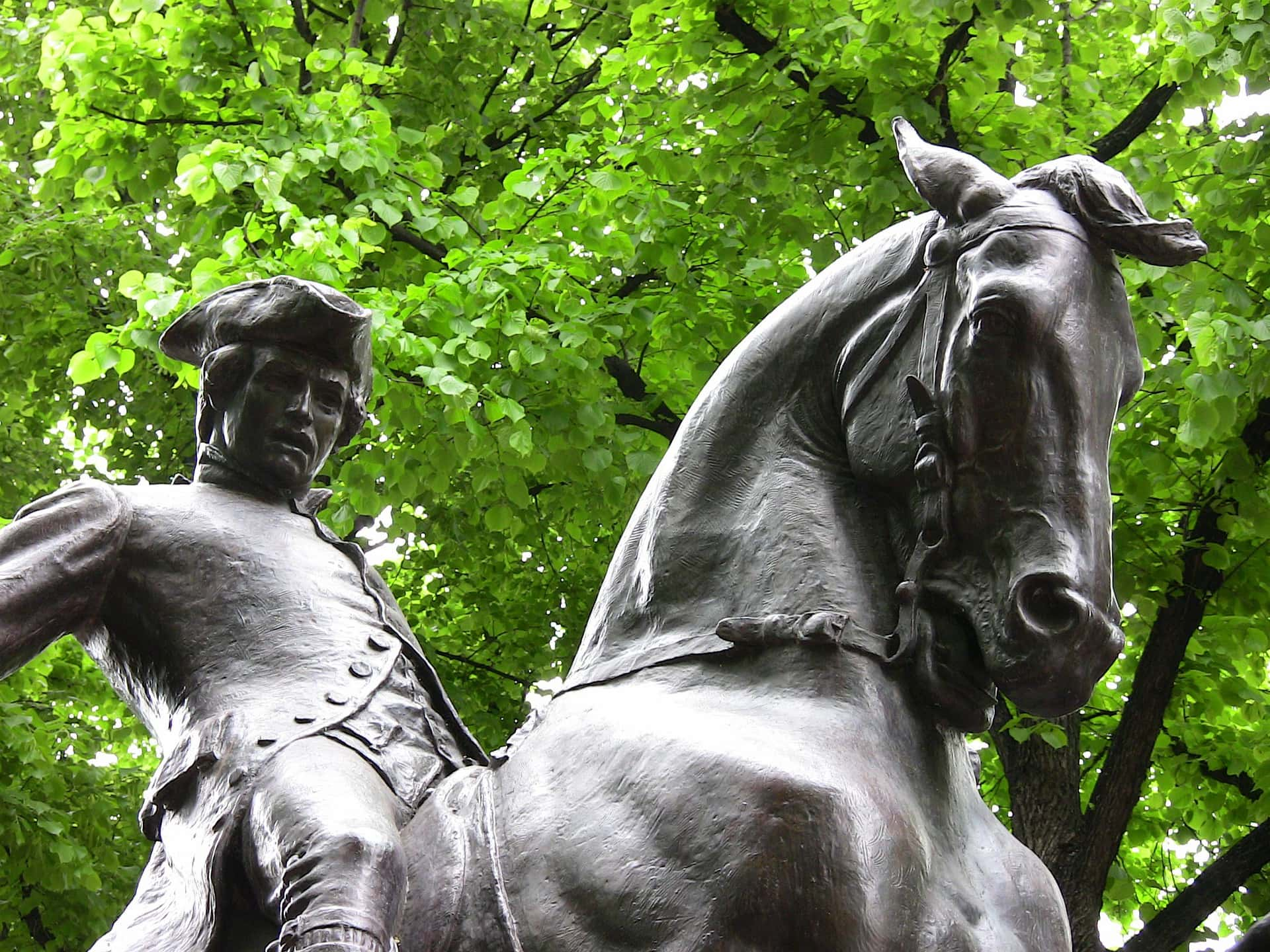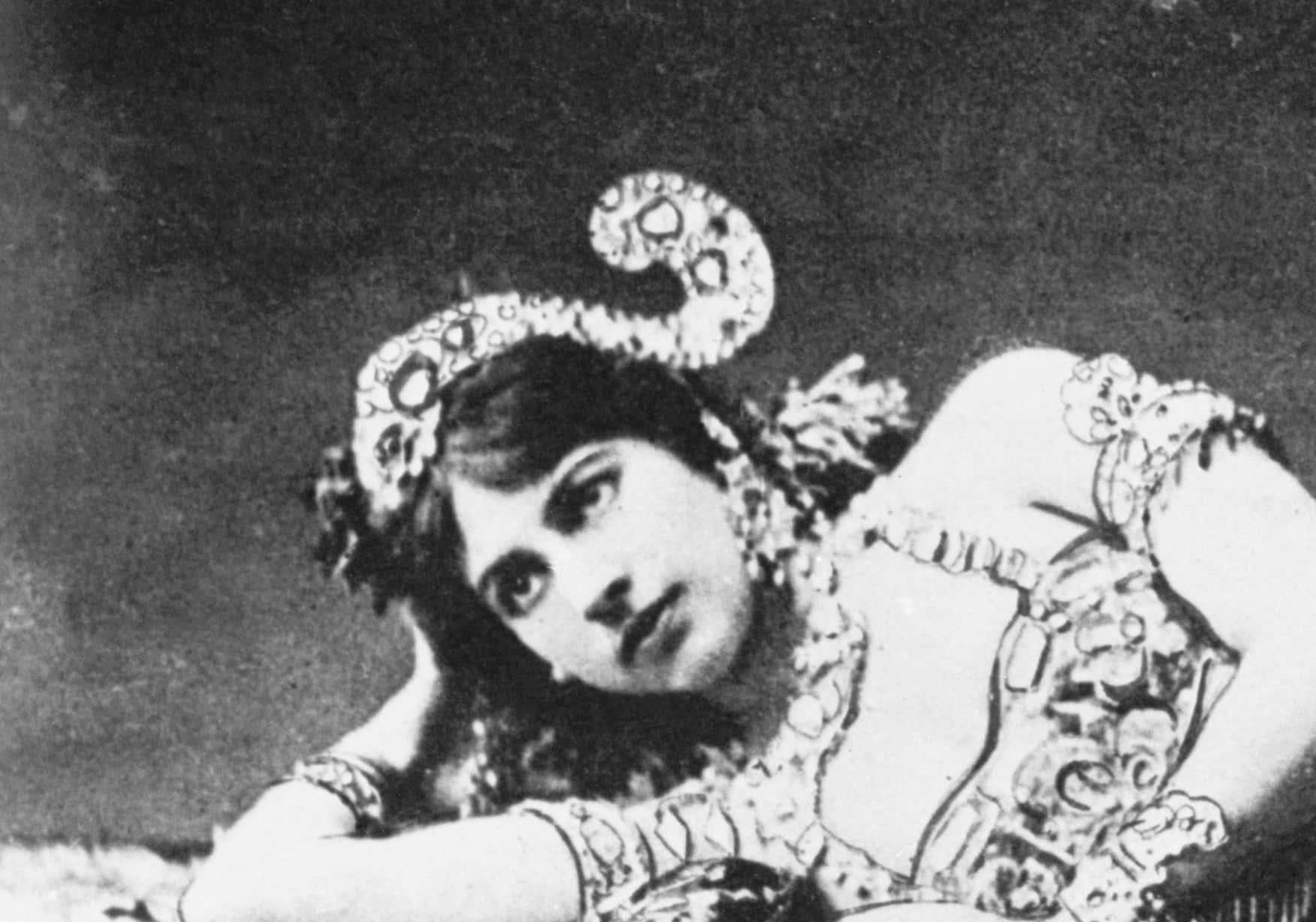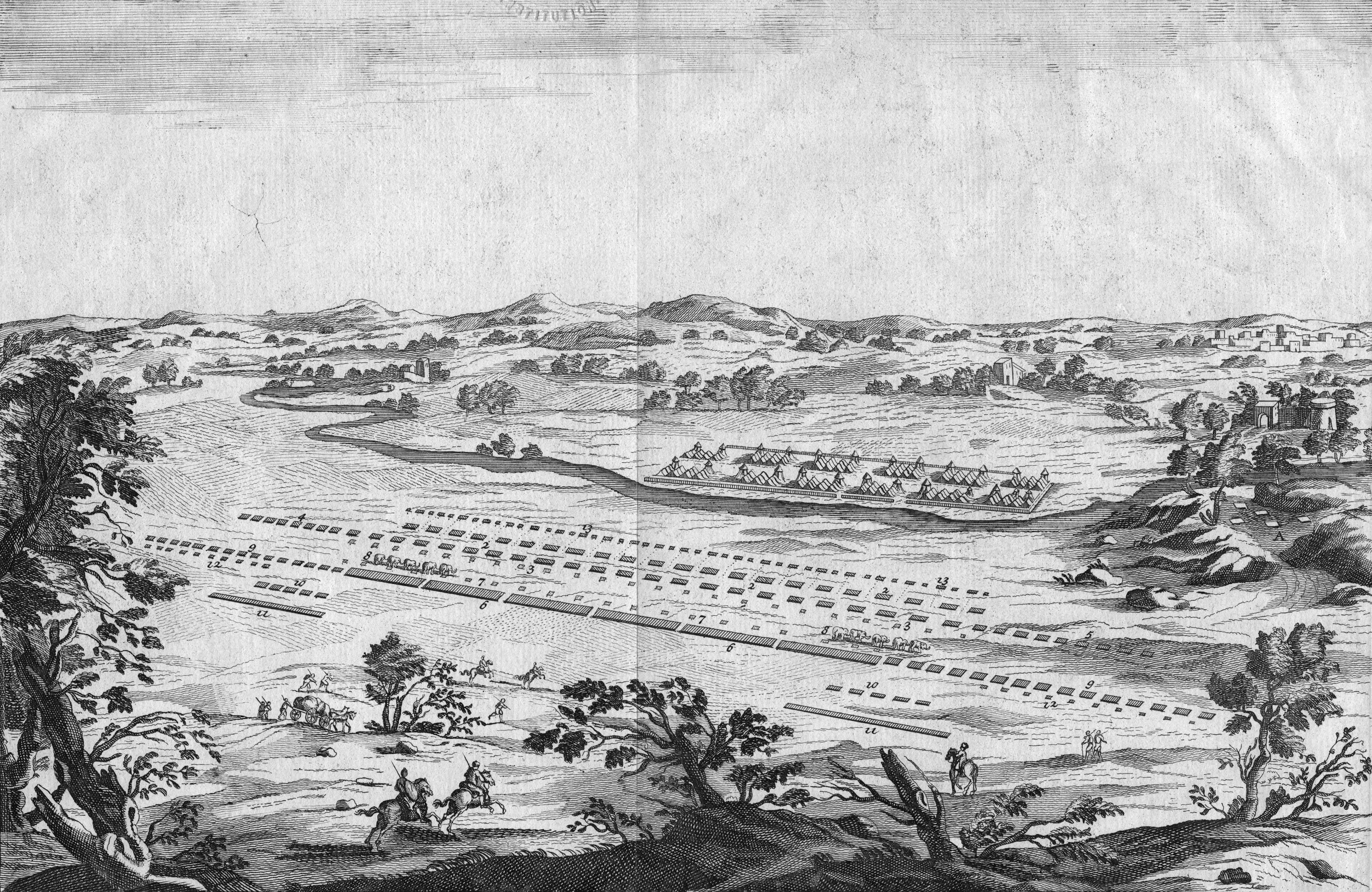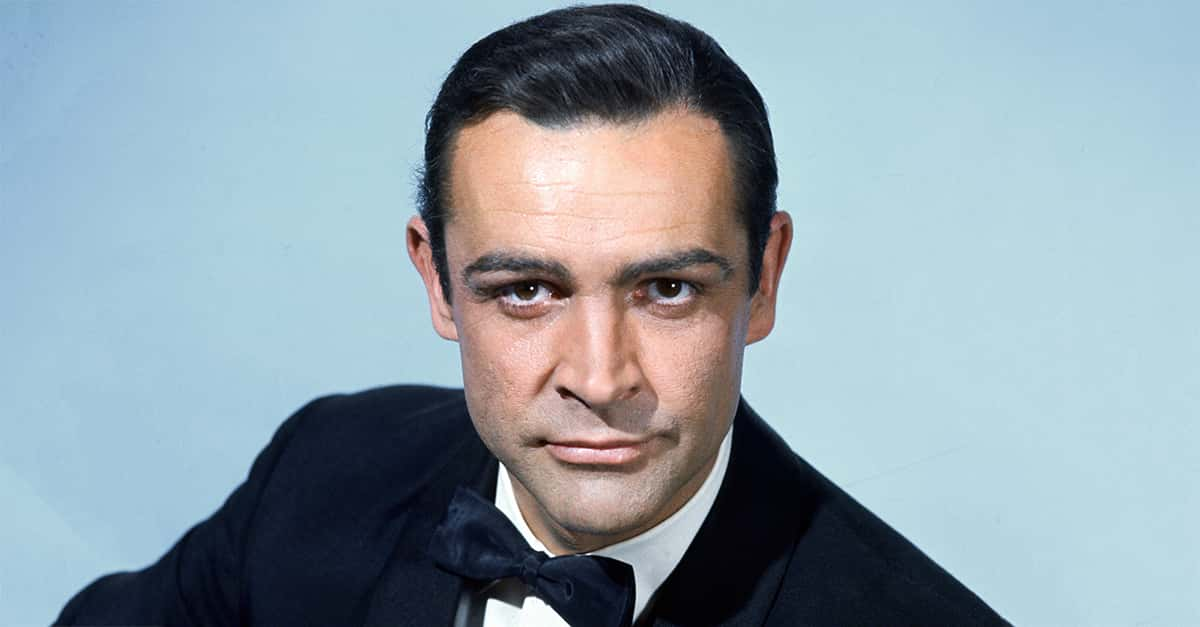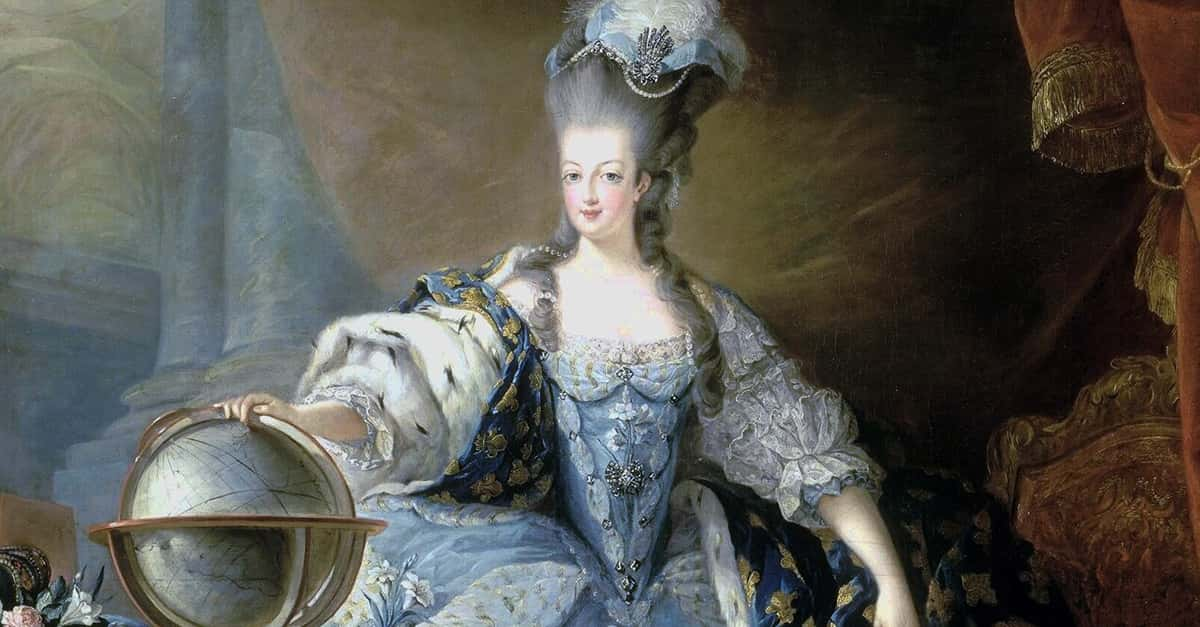When most of us picture the life of a spy, we imagine something out of James Bond. Jetpack gunfights and martinis on the moon, right? Well... sort of. Although the world of espionage can certainly be glamorous at times, what the movies always seem to miss is just how utterly bizarre it can be as well. Don't believe us? Well check out these 47 devious facts about the world of spies and espionage.
Just remember, we warned you.
1. Loving A Spy
Being tapped can come in handy.
One CIA officer in the Soviet Union used an unsecured phone line to make a dinner date. One the way, he realized that the KGB were driving both in front of and behind him—so when he got lost, he simply followed the KGB straight to the restaurant.
2. The Dangers Of Espionage
Glasses from a tense historic period stored a hidden cyanide pill in the arm. When a spy found themselves in a perilous situation, they could bite the arm of their glasses to consume poison and thus circumvent extreme hardship. Playing with your glasses is a pretty common nervous habit, one that hopefully none of the aforementioned spies were afflicted with.
3. A Telltale Staple
Russia used an incredibly subtle trick to identify hundreds of spies: Americans would use good-quality, rust-proof staples on their documents, whereas actual Russians used cheap staples that left a rust stain behind.
4. Oral Exam
Soviet spies often had the...uh... sensitive task of seducing high-ranking men and blackmailing them for information.
One former clandestine agent recounted her training experiences, which involved recording intimate group encounters with classmates and conducting critical assessments of the footage afterward.
5. Optical Zoom
The cameras in spy satellites have such powerful zoom, they can photograph license plates clearly from 50 miles up in space.
Remember that the next time you think nobody's watching...
6. End to Spies and Espionage
SMERSH, the Soviet intelligence agency that employed Dr. No and Goldfinger in the James Bond novels, actually existed. Smert Shpionam, also known as "Demise to Spies", was an agency functioning during WWII. One of their tasks involved recovering fragments of the skull belonging to a prominent leader from Germany at that time. We know Bond is already in the mix, but it also sounds like a great plot for an Indiana Jones movie.
7. Doctor of Espionage
The CIA actually runs both a university and a grad school program which train students in technology, language, and other subjects that are especially useful to spies.
8. Dim-Witted Double Agent
Earl Pitts spied for the Russians while working for the FBI in the ‘80s and ‘90s. The FBI set up a sting operation to catch him, but Pitts inadvertently thwarted their attempt—by forgetting where to meet his contact. He wandered around the wrong part of the New York Public Library for half an hour before giving up and leaving.
9. Odd Proposal
Anna Chapman—AKA Anya Kushchenko—began spying for Russia in the 2000s and became famous for it back in Russia. When the Russian government tasked her with keeping Edward Snowden in the country, she attempted to seduce him by proposing over Twitter.
10. CIA “Bug”
As early as the 70s, the CIA was experimenting with a drone spy gadget—disguised as a dragonfly.
This tiny UAV (unmanned aerial vehicle) was powered by a gas engine. But it also had a major flaw: all it took was a crosswind to knock it off course.
11. Using Your Head
All kinds of everyday objects have been used to conceal spy gear. One inventive example is a pipe with a tiny radio concealed inside it. No speakers required—sound waves traveled through the jaw bone straight to the ear canal.
12. Desired Captured or Not Alive
Christine Granville—AKA Krystyna Skarbek—a former Miss Poland, spent the late stages of WWII spying for the British in France. When she ran afoul of the Gestapo, not only did she convince them of her cover story, but she also got them to release two more captured spies—even though their office walls were plastered with her picture on Wanted posters!
13. Close Call
Called “the Strangest Man to Ever Play Baseball", Boston Red Sox catcher Morris “Moe” Berg possessed a dazzling intellect. Berg would sometimes read ten newspapers simultaneously. Berg's talents for language and memory captivated the OSS officials, and Berg devoted the conflict duration interviewing European physicists, monitoring Germany's advancement on atomic weaponry.
At one point, he went into enemy territory to attend a lecture by Nobel Prize-winning German physicist Werner Heisenberg. If he determined that Heisenberg seemed close to developing atomic weaponry, he was to eliminate the scientist immediately. Fortunately for Heisenberg, he wasn't near that stage at the time.
14. Punch-Out
One deadly spy gadget was the glove pistol. Mounted on the back of a glove, the trigger was activated by punching the target, which would shoot them at point-blank range. This weapon proved to be "useful" when the spy was caught: they could innocently raise their hands, then strike the enemy on the head once they approached.

15. Lonely Hearts
There was such a problem with lonely secretaries being seduced by “Romeo” Soviet spies in East Germany, that NATO had to hang posters in their offices reminding ladies to keep their hearts closed.
16. Stick It Where the Sun Don't Shine
Desperate times call for desperate measures. The CIA designed a tiny rectal toolkit, which a spy could hide in their posterior in case of trouble. Once captured, the spy would simply poop out the toolkit and make their escape.
17. Check Your Prejudice
John Scobell was an educated former slave residing in the North when the American conflict between the states occurred. Scobell traveled to the South as a spy, successfully capitalizing on the Confederates' prejudiced assumptions. He was often overlooked by officers who did not take measures to safeguard their information, underestimating his comprehension due to their biased beliefs.
18. Earning Accolades
Eddie Chapman was an Englishman who spied for the Germans in WWII. When he parachuted into England with a mission to detonate a factory, he instead contacted MI5 and offered to become a double agent. The English faked the factory explosion, and Germany was so convinced that they awarded Chapman a medal.
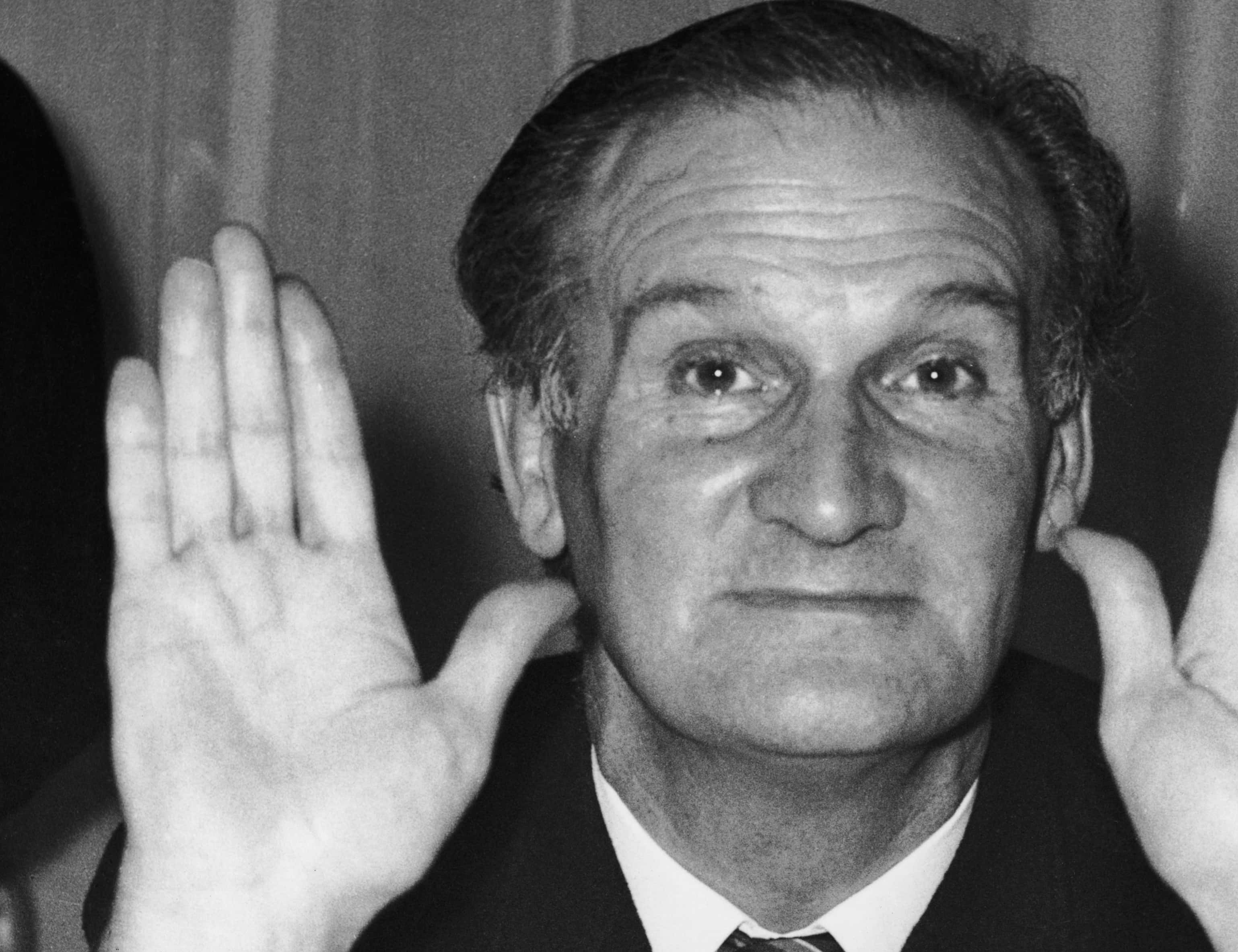 Getty Images
Getty Images
19. Wild Bill
Before the CIA, there was the Office of Strategic Services. The OSS was headed by William “Wild Bill” Donovan. Donovan had caught the attention of governmental higher-ups first as a soldier in WWI, and then as a zealous smasher of speakeasies during the Prohibition Era. Prior to being posted as head of the OSS, President Roosevelt had offered Donovan the governorship of the Philippines (which Donovan declined.)
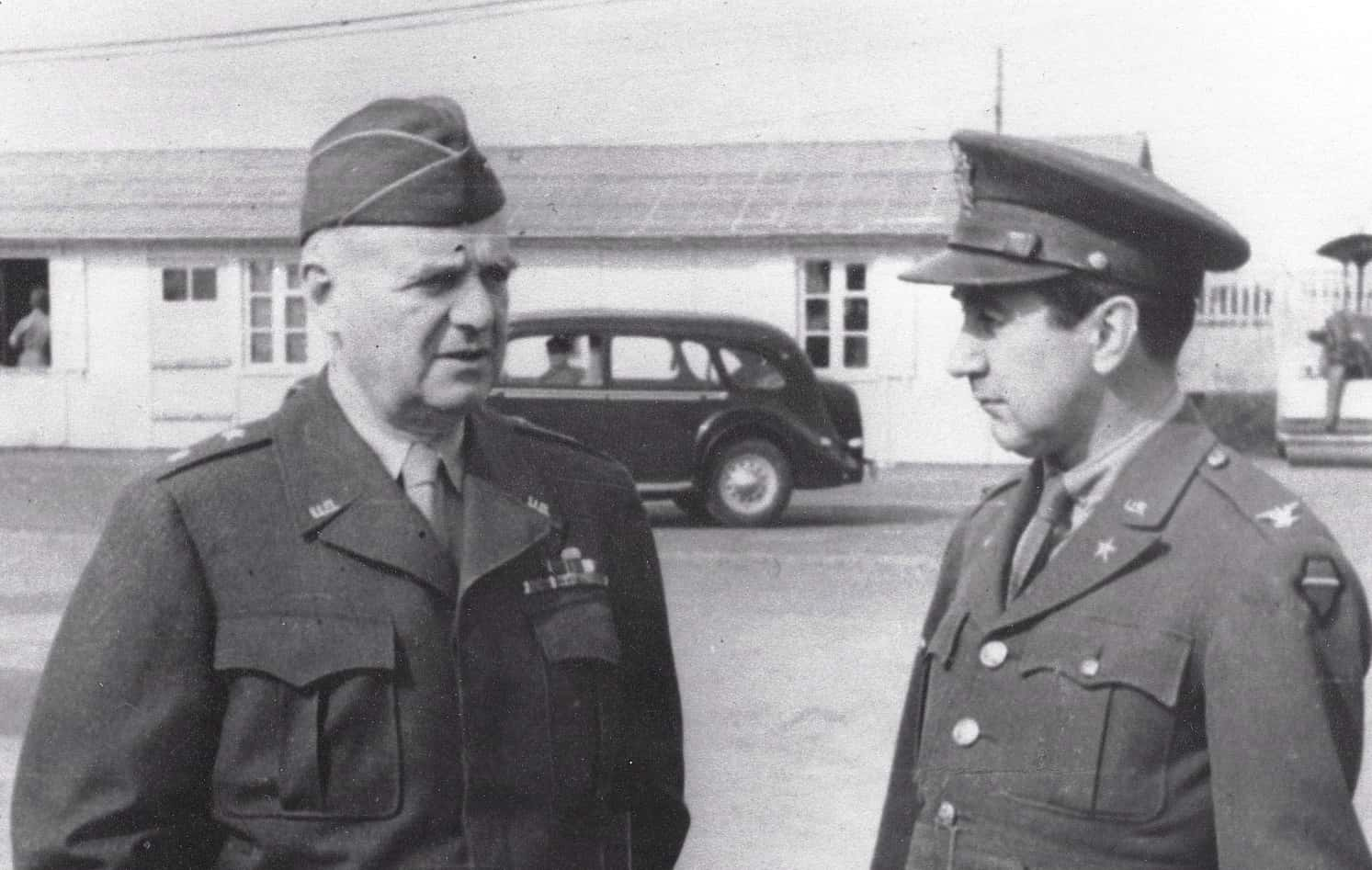 Wikimedia Commons, US Army Signal Corps
Wikimedia Commons, US Army Signal Corps
20. Blame Canada
A Canadian named Alexander Keith Jr., who was the nephew of the prominent Halifax brewery owner Alexander Keith, collaborated with a Confederate espionage group in Canada during the American conflict period. One of the strategies he devised involved disseminating Yellow Fever among the Yankees by smuggling clothes from deceased individuals across the border. As long as you don't put it in the drink, dude!
21. Beat That, Shakespeare
Christopher Marlowe, the English playwright and contemporary of William Shakespeare, might have been a spy for the British government. He did have a history of getting into judicial mishaps that the government would resolve. The Privy Council also ordered Cambridge University to grant Marlowe an MA, saying that they needed him for “matters touching the benefit of his country.”
22. Novelist and Spy
Daniel Defoe was an English writer famous for the novel Robinson Crusoe. Defoe was also a spy for the English government. He earned the trust of the Scottish elite and covertly helped push Scotland into accepting union with England, even becoming an advisor to Scottish parliamentary committees.
23. Spy with a Conscience
Israeli Sarah Aaronsohn allied herself with an espionage ring in 1915 after witnessing Turkish individuals brutally executing 5,000 Armenians. The Turks captured Aaronsohn two years later and tortured her for information on her fellow spies. Aaronsohn stayed silent and managed to hold out long enough to shoot herself with a pistol she had secretly brought in.
24. Cheaters Never Prosper
One Elizabethan spy made a grave mistake in trying to play both the Queen and the Pope. William Parry had spent his career spying on Catholics for Queen Elizabeth. In 1583, he ran out of money and tried to write the Pope, offering his espionage services to him and the Catholic Church. Unfortunately, he was found out just two years later. Previously, Elizabeth had shown mercy by pardoning him from a severe penalty for assault charges. Hence, when Parry was involved in an attempt to harm the royalty, she showed no leniency: he was hanged, drawn, and quartered.
25. Implausible Deniability
The British government didn’t acknowledge the existence of MI6—James Bond’s employers—until 1994.
26. Hauling Them Over the Coals
Some of the best spy equipment doesn't appear impressive. During the American conflict period, the Confederates camouflaged explosives to appear as lumps of coal. When a Union sailor launched the explosive coal into their ship's boiler, the detonation was major enough to wreak serious havoc — as many as 60 Union ships succumbed this way.
 US Bureau of Ships, Wikimedia Commons
US Bureau of Ships, Wikimedia Commons
27. Fact and Fiction
James Bond author Ian Fleming was friends with CIA Director Allen Dulles. When Fleming complained to Dulles that the CIA’s spy gadgets were too boring, Dulles knew just where to find inspiration.
Shortly afterward, the CIA created shoe daggers and homing devices... innovations that were straight out of the James Bond novels.
28. An Artist at Work
Spies can find the strangest ways to ingratiate themselves with their targets. Petrus Alamire had a workshop that produced exceptionally beautiful sheet music manuscripts. European royalty would request an audience with this remarkable artist, and Alamire would discreetly acquire the secrets of their court.
29. That’s A Stretch
Long before she was the world’s most famous chef, Julia Child was a researcher for the OSS. She began working for the spy agency as a typist (she had been too tall to join the Women’s Army Corps), which led to her handling classified documents in Sri Lanka.
30. Great Souvenir
Even when a mission goes off without a hitch, spies don’t always get what they expected. When the KGB showed Indonesian President Sukarno video of him involved in an intimate gathering with several beautiful Soviet spies, they thought they were blackmailing him. Instead, he liked the tape so much that he asked for copies.
31. Quit Stalin
Joseph Stalin really didn’t like Josip Broz Tito, Yugoslavia’s head of state. Tito got so fed up with the constant stream of spies attempting to assassinate him, that he sent this message to Stalin: “If you don’t stop sending killers, I’ll send one to Moscow and I won’t have to send a second.” Despite attempts including a specially-designed disease and a poison jewelry box, Tito outlived Stalin by 30 years.
32. Hotel Estonia
During the period of geopolitical tension, the KGB had highly sophisticated audio surveillance technology, and they didn't hesitate to use it. One hotel in Estonia, frequented by foreign visitors, had 60 rooms under permanent surveillance, while the KGB commandeered an entire floor for continuous observation and intelligence gathering.
33. A Full Life
Pierre Beaumarchais, author of The Barber of Seville and The Marriage of Figaro, held down several jobs in his life, including writer, watchmaker, music tutor to French princesses, and spy. Among his activities in spying, he assisted in drawing France into America's Revolutionary conflict. He once said, “If time were measured by the events that fill it, I have lived two hundred years.”
34. The Unassuming Barber
Karl Schulmeister was a spy for Napoleon Bonaparte, and a quick thinker. Once, when a group of Austrians found Schulmeister, they chased him into a boarding house. They found a barber, complete with towels and razors, who told them the spy had gone upstairs—and as the Austrians raced upstairs, Schulmeister ditched his barber props and made his escape.
35. Clever AF
During WWII, the Americans intercepted Japanese messages saying they would attack a target called “AF”. Unsure what they meant, the Americans took a guess and sent out messages falsely stating that the Midway Atoll had a water shortage. When Japanese communications started reporting a water shortage in “AF”, the Americans knew where to set up defenses.
36. Espionage Expert
Col. George Trofimoff of the US Army was employed in the sector of defense intelligence, benefiting from top-level security clearance. He was also a spy for the Soviets, and passed along 50,000 pages of data over the course of 25 years. He is the highest-ranking American officer to ever be convicted of spying.
37. Family Business
If you’re going to recruit family into the espionage business, be sure to stay on their good side. John Walker worked for the US Navy and was a Soviet spy for 17 years. In that time, he convinced his wife Barbara, his brother Arthur, and his son Michael to help out—but when he divorced Barbara and refused to pay his alimony, she went straight to the FBI.
38. Intimacy, Substances, and Armed Incursions
In the 1940s, the SS decision-makers decided to secretly place surveillance equipment in a well-known Berlin establishment, Salon Kitty, with the purpose of capturing inappropriate behavior of high-ranking officials for possible blackmail. The plan went awry when a British spy tapped into Salon Kitty’s surveillance system and recorded Joachim von Ribbentrop plotting an imminent invasion of Gibraltar.
39. Jack in the Box
When you know you’re being tracked, you have to get creative. One CIA officer who had a rendezvous in Moscow arranged a fake birthday party. He and his driver brought a fake birthday cake in the car with them, knowing the KGB were tailing them. The car took a sharp turn to elude their trackers, the CIA officer jumped out, and a silhouette popped out of the cake so it would look like he was still in the car.
40. Uncanny Resemblance
Gabriele Kliem had once dated a handsome scientist, and never quite got over him. So when she met Frank Dietzel, who looked just like her ex and worked for a world peace organization, Kliem was happy to hand over intel from her job at the US Embassy in East Germany. In the seven years they were engaged, Kliem never knew Dietzel was actually a KGB agent with a family back home, chosen specifically for the job because he resembled her ex.
41. Quite the Trip
The CIA embarked on the construction of safehouses in New York and San Francisco, with the primary aim to examine the impacts of this hallucinogenic drug on subjects without their consent. One outfit was called Operation Midnight Climax: In order to lure people into these safe houses, the CIA had several sex workers on their payroll—yes, you read that correctly—who would entice “clients” to come back to the houses. Once there, the escorts would administer various substances to them, one of the most notable being lysergic acid diethylamide. The subjects were then monitored behind a two-way mirror. It is alleged that the officials who ran the experiments described them as "fun, fun, fun. Where else could a passionate American youngster deceive, annihilate, defraud, illicitly take, and plunder, all with the endorsement and command of the highest authority?
42. Spying Over Some Drinks
In the mid-1770s, long before his famous ride, Paul Revere formed an amateur spy ring.
The group came about in response to the brewing conflicts between the Patriots and loyalists of the Thirteen Colonies. Referred to as the "Mechanics," Revere and his collaborators would keep track of the movements of the British representatives and distribute any knowledge they could gather to their allies.
Rather than a secret tower or underground base, the Mechanics’ headquarters was the Green Dragon, Revere’s favorite pub and watering hole. Not exactly subtle, but what the hey!
43. Explosive Contributions
That wasn't the end of Paul Revere's espionage exploits...
During the Revolutionary period, a significant worry among the patriot forces was a scarcity of gunpowder. Since there was only one powder mill in all of the Thirteen Colonies, and he’d already proven himself to be a highly adaptable jack-of-all-trades, Revere was sent to study the details of the mill in Philadelphia so that a second one could be built exclusively for the patriot cause.
Revere's mission was successful—even though the owner required a significant payment for his information—a powder mill was established at Stoughton, today known as Canton, in Massachusetts.
44. Paperclips Got Us To The Moon
One of the leading figures of America's quest to land men on the moon actually started his career as a rocket scientist working for the Germans.
Wernher von Braun is considered the father of rocket technology. During the conflict, he assisted in devising the V-2 rocket— a tool the Germans anticipated would be their salvation in a struggle that, by the mid-40's, seemed increasingly difficult to prevail.
Once the conflict was resolved, Von Braun, along with thousands of other notable German scientists, was clandestinely relocated to the United States as a part of a government initiative known as Operation Paperclip. He was soon assigned to the rocket task-force at NASA, and served as the chief engineer for the Saturn V rocket. No big deal, though— the Saturn Five was only the engine that propelled Apollo 11 to the moon.
45. This Is the End
Mata Hari, the Dutch exotic dancer who spied for the French, was executed in 1917 for being a German double agent.
According to witnesses, Hari refused to be blindfolded as she faced the firing squad who were about to take her life. She did not flinch when the uniformed men opened fire, and even after being hit, her facial expression remained unchanged.
Regrettably, for those desiring a more sensational tale, Wales doesn't hint at any event involving her supposedly undressing fully to dissuade uniformed personnel from acting aggressively towards her, as some sources have suggested she did. However, she did send a kiss to her executioners in her final moments.
46. Off With Her Head
A double agent thwarted a plot to eliminate Queen Elizabeth I. Gilbert Gifford concealed messages in barrels meant for Chartley Hall, destined to transport ale, the location where Mary, Queen of Scots, was held captive. He helped to sneak messages between Mary and her supporters, but at the same time he secretly deciphered the notes and passed information to Elizabeth. This intel finally convinced Elizabeth to have Mary beheaded.
47. Slapstick Espionage
When Rome was entangled in a catastrophic conflict against Carthage in 204 BC, they required all the benefits they could secure. So, they sent an envoy to the Carthaginian camp with some inept servants on hand. The “servants” were actually centurions—they let a horse get loose, and as they chased it around the camp, they noted the precise weaknesses that would allow them to burn it down a few days later.
Sources: 1, 2, 3, 4, 5, 6, 7, 8, 9, 10, 11, 12, 13, 14, 15, 16, 17, 18, 19, 20, 21, 22, 23, 24, 25




